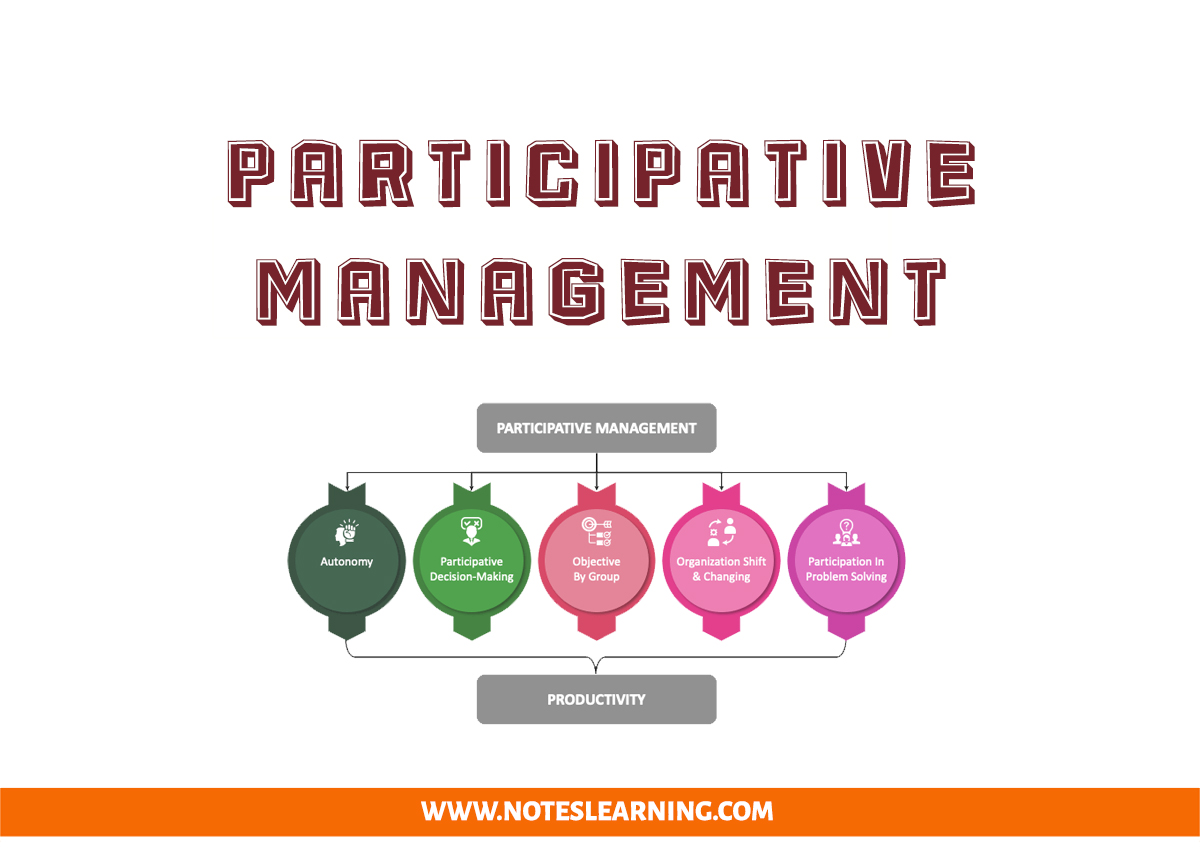Introduction
The term “participative management” refers to the practice of actively including organization members in all of its decision-making processes. It can also be referred to as participatory decision-making or employee involvement. This type of management system encourages the involvement of employees and stakeholders at all organizational levels in the analysis of issues, creation of plans, and application of fixes.
Managers who recognize the value of human cognition and strive to build great relationships with their staff members apply this notion. They are aware that employees serve as the intermediaries who interact with clients and meet their needs. Many firms have adopted this type of management in order to outperform their competitors in the market and maintain its competitive advantage. They appreciate the staff’s original opinions, ideas, perspectives and efforts and include them in the decision-making process.
Many companies still follow traditional management style, where employees are taught what to do and bossed around by their supervisors. They never get the liberty to make decisions within the organization. However, the times are gradually changing and employees are urged to take part in organizational decision-making. Managements encourage employees to give comments and ideas that may improve organizational procedures. The key motivations behind adopting this management style are as follows; working together to achieve specific goals in the shortest amount of time and staying ahead of the competition.
Features of Participative Management
While some businesses still continue to use traditional management practices, others actively encourage staff to provide feedback and suggestions. Here, we will be discussing about some of the key features of participative management:
Moral Dimensions
Participatory management is morally sound and based on ethical values and ideals. When it comes to making organizational decisions, everyone is given the same consideration under this type of management. It’s based on transfer of authority, responsibility sharing, and employee empowerment.
Two-way Communication
Implementing participative management promotes two-way communication. Along with encouraging employee participation in decision-making and providing ideas and proposals to improve organizational procedures, management also determines what employees must perform. They are free to discuss issues, opinions, and suggestions with their managers as well.
Employee Empowerment
Employees can take part in management processes when there is a participative management style in place. They are urged to express their opinions. Gone are the days when bosses micromanage their staff. Employees can participate in the decision-making process without any hesitation under this management style.
Enhanced Role of Employees
When it comes to offering ideas and proposals for the organizational decision-making process, all employees under this system of management are given the same consideration regardless of their positions. Employees are now the most valuable assets in a company instead of being the managers’ servants.
Employee Satisfaction
The majority of an employee’s life is primarily spent at work. Thus, it’s crucial for them to feel psychologically satisfied. Some of the characteristics of participative management that boosts employee satisfaction include commitment from the company, honoring the dignity of individuals, and co-determining corporate policies.
Goals of Participatory Management
As mentioned above, participative management is an essential tool for improving an organization’s productivity and efficiency as well as for forging close bonds with its workforce. The following are the goals of participatory management:
- To promote positive interactions between the management and employees of the organization.
- To foster communication and trust between the company’s management and employees.
- To provide a high degree of job satisfaction.
- To allow employees the freedom to freely share their opinions regarding the policies and objectives of the company.
- To achieve a considerable increase in output.
- To give the workers welfare facilities.
- To educate employees on how to share in the management’s responsibilities as well as understand them.
- To encourage collaboration.
- To create a versatile human resource.
- To reduce absenteeism and employee turnover.
Participative management is still a strange concept for many businesses, especially in developing countries. These kinds of companies view it with such an odd vision that they are unable to imagine how it could possibly function. Such businesses discourage workers from contesting their authority. But the firms who have successfully used this particular management style see it as a way to meet their objectives and foster a productive workplace. Therefore, the idea is becoming more and more well-known and popular on a global scale.
Reference

